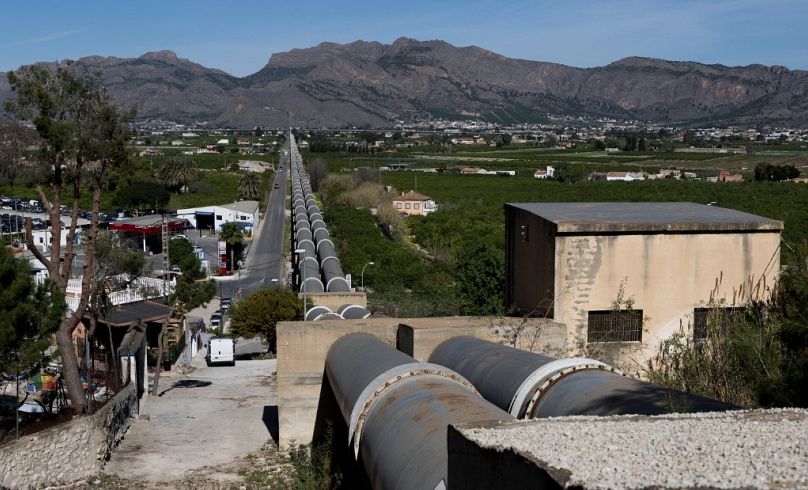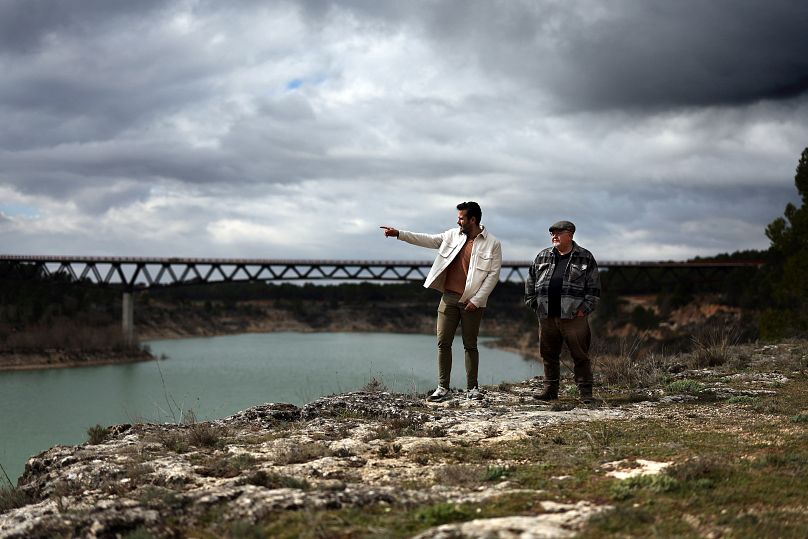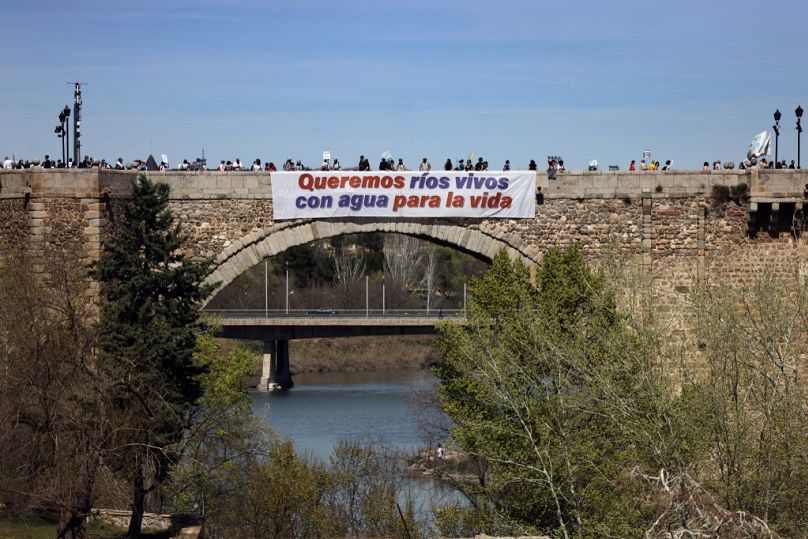Spain’s government has decided to cut water brought from the Tagus River to irrigate crops in the bone-dry southeast of the country.
Spain is one of the EU’s biggest fruit and vegetable producers.
Almost half of the country’s exports are grown by farmers like Juan Francisco Abellaneda, co-founder of farming cooperative Delior.
His salads and watermelons fill the shelves of Europe’s supermarkets throughout the year. These crops are irrigated by water brought from the River Tagus, hundreds of kilometres to the north of Abellaneda’s 300 hectares of fields near Murcia.
But, as Spain faces the realities of climate change with three-quarters of the country at risk of desertification, the government has decided to limit the flow of water from the Tagus to the southeastern Levante.
“There are many thousands of hectares that are cultivated here, as soon as you cut that (the water supplies) by half, well, everything that is not cultivated will be desert, in a few decades, in a few years,” Abellaneda explains.
about:blank
Without water, the land can’t be irrigated leading to uncertainty about the future. It means he may have to cut some of the 700 staff employed by the Delior cooperative.
“We need the water. If they take it from us, it will be nothing but a desert here,” Abellaneda says.
Why has water transfer become controversial?
Water levels in the Tagus, the Iberian peninsula’s longest river, have dropped dangerously low. In some places, the dried-up riverbed can be crossed on foot in summer.
As the Tagus runs dry, the right to pull water from the river – which crosses into Portugal before meeting the Atlantic Ocean – has been the centre of a heated debate.
“The Tagus is suffering,” says Domingo Baeza, professor of river ecology at the Autonomous University of Madrid.

“It is degraded in numerous places… because we have far outstripped its capacity (with) uncontrolled expansion of the land it irrigates.”
Water is channelled to the bone-dry southeast of Spain via the Tagus-Segura Water Transfer project – 300 kilometres of tunnels, canals, aqueducts and reservoirs. It brings billions of litres of water from the Tagus to the Segura basin between Murcia and Andalusia.
It was once heralded as a vital solution to drought – now it is accused of making them worse.
Global warming has changed Spain
Since the Water Transfer was built, Spain’s average temperature has increased by 1.3 degrees Celsius, according to the country’s meteorological service. Extreme temperatures and a lack of rainfall have dried up rivers and reservoirs, leading to water shortages.
“Global warming has changed things,” says Julio Barea, a spokesperson for Greenpeace Spain. He adds that the Transfer “no longer works” for Spain.
“The Tagus needs the water (it is losing to farms in the southeast) to survive.”

Residents of the Castile-La Mancha region, where the Tagus’ waters are syphoned away, say the effects have been visible for years. Artificial lakes created by the damming of the river in the 1950s used to attract tourists who would come to swim, boat and eat at local restaurants.
“Everything stopped when the damned water transfers started,” says Borja Castro, vice president of the Association of Riverside Municipalities of Entrepenas and Buendia, whose water is pumped to the southeast.
“With our water went businesses, jobs and a part of our population. They turned the Levante into the garden of Europe, but with water that came from somewhere else. It’s madness.”
A battle over water in Spain
Farmers in the southeast say cutting the flow of water from the Tagus could mean the end of agriculture in the region.
It could lead to 12,200 hectares of arable land being abandoned, the SCRATS farmers lobby group claims. The economic cost would also be colossal, it argues, up to €137 million a year, with 15,000 jobs lost.
Prime Minister Pedro Sanchez’s left-wing government says it had no choice but to cut the flow of water to keep in line with rulings from Spain’s Supreme Court and EU environmental rules.
Minister for Ecological Transition Teresa Ribera has said that the decision was based on “the best scientific knowledge possible”. She has promised more money to develop other sources of water like desalination – something farmers say is too expensive to be viable.

The decree has created a unique political situation ahead of local elections later this month.
The socialist region of Valencia is backing Murcia to try and stop the cuts. But socialist-held Castile-La Mancha, with the help of local right-wing politicians, backs the government’s decision to stop the flow of water.
Environmentalists argue that Spain’s whole agricultural system needs to be completely rethought.
“More than 80 per cent of freshwater in Spain is used by agriculture… it’s just not tenable,” says Greenpeace’s Barea.
“Spain cannot be the garden of Europe if our water is getting more and more scarce.”
Source: Euronews


